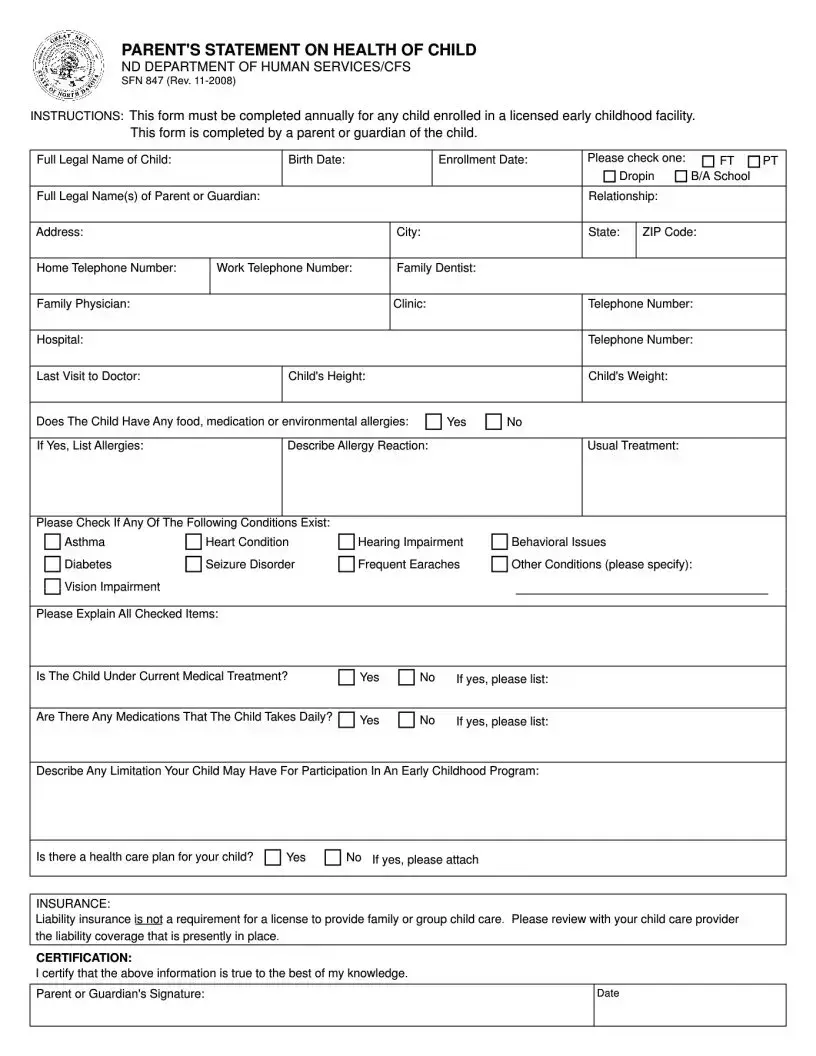-
What is the SFN 847 form?
The SFN 847 form, also known as the Request for Traffic Conviction Records, is a document designed for use in the state of North Dakota. Its primary function is to permit individuals or entities to request traffic conviction records for specific individuals from the North Dakota Department of Transportation (NDDOT). It is commonly utilized by employers, insurance companies, and law enforcement agencies to verify driving histories.
-
Who can request an SFN 847 form?
Access to an SFN 847 form is not restricted to any single group. Employers, insurance companies, legal representatives, and private individuals are among those who might have legitimate reasons to request someone's traffic conviction records. However, the requestor must have a valid reason and, in certain cases, obtain consent from the person whose records are being requested.
-
What information do I need to provide on the SFN 847 form?
To complete the SFN 847 form accurately, you will need to provide specific details about the individual whose records you are requesting. This includes their full name, date of birth, and driver's license number. Additionally, you must provide your own information as the requester, including your name, address, and the reason for your request. You may also need to furnish a signed consent form from the individual whose records are being requested, depending on the circumstances.
-
Is there a fee to request records using the SFN 847 form?
Yes, there is typically a fee involved in requesting traffic conviction records using the SFN 847 form. This fee is set by the North Dakota Department of Transportation and may vary. It is advisable to contact the NDDOT directly or visit their website for the most current fee information before submitting your request.
-
How do I submit the SFN 847 form?
The completed SFN 847 form can be submitted to the North Dakota Department of Transportation via mail or, in some cases, electronically through their website. Detailed submission instructions, including mailing address and any electronic submission guidelines, can be found on the NDDOT website or by contacting their office directly.
-
How long does it take to process a request submitted with the SFN 847 form?
The processing time for requests submitted with the SFN 847 form can vary based on the volume of requests received and staffing levels at the NDDOT. Generally, most requests are processed within a few weeks. For the most accurate and up-to-date processing times, it is recommended to contact the NDDOT directly.
-
Can I request someone else's traffic conviction records without their consent?
In most cases, accessing someone else's traffic conviction records without their consent is restricted by privacy laws. However, there are exceptions, such as for employers conducting background checks for employment purposes under specific, legally permitted conditions. It is important to understand the legal requirements and obtain the necessary consent or legal authority before making such a request.
-
What if the information on the traffic conviction record is incorrect?
If you believe that the information contained in a traffic conviction record obtained through the SFN 847 form is inaccurate, you should contact the North Dakota Department of Transportation immediately. They will guide you through the process of disputing and correcting any inaccuracies in the record.
-
Is the SFN 847 form available online?
Yes, the SFN 847 form is available for download from the North Dakota Department of Transportation's official website. This provides convenience and accessibility for individuals and entities needing to request traffic conviction records from anywhere at any time.
